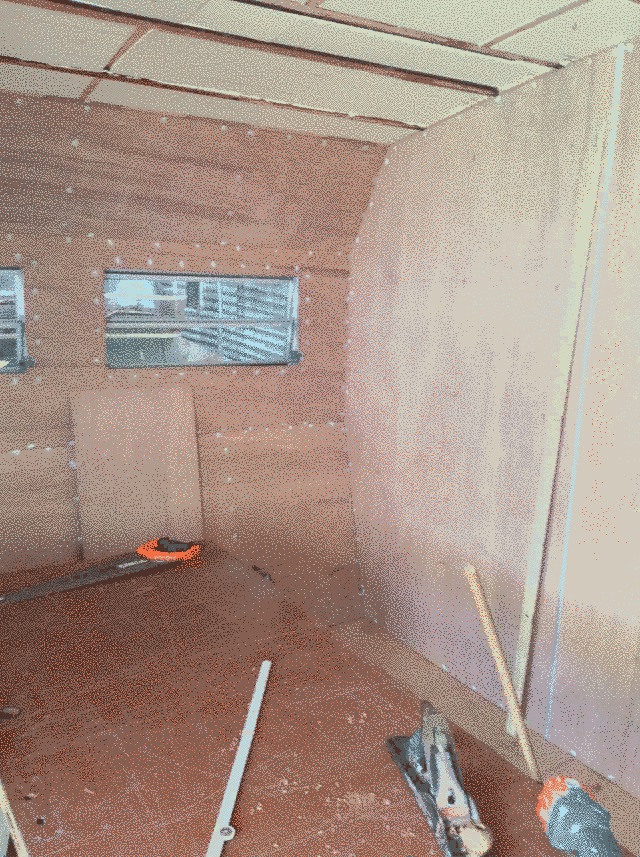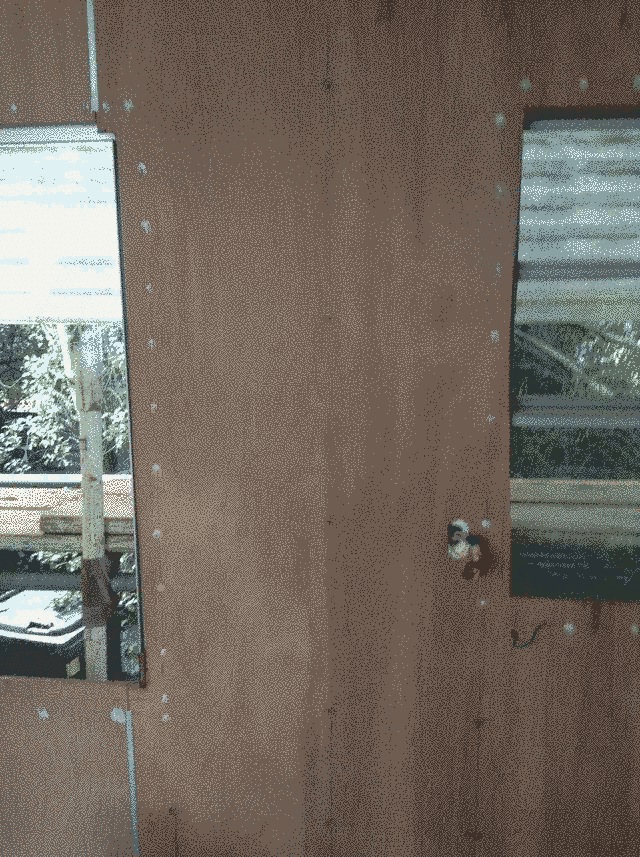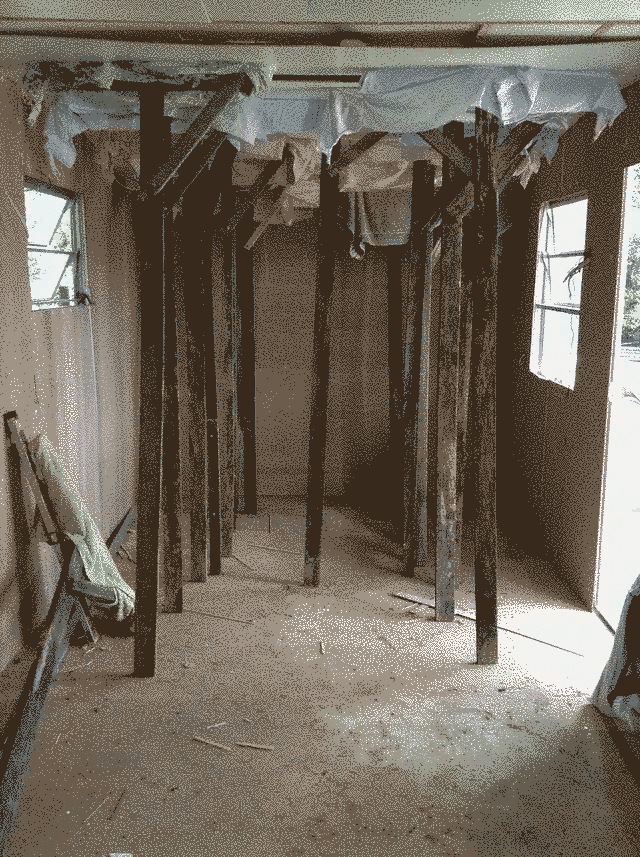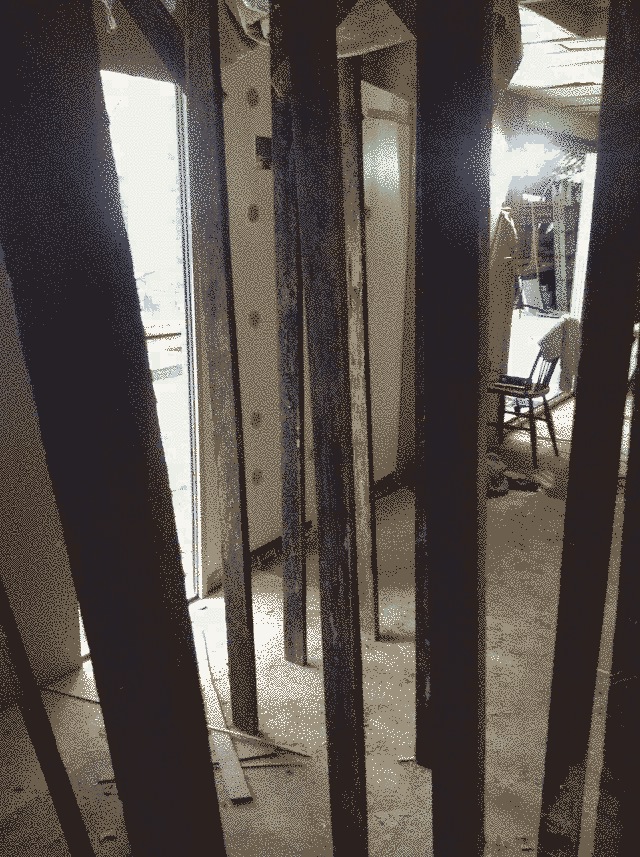

As the work moves closer to the visible “skin” of the caravan, the measurements grow more accurate. The tolerance gets lower and lower. However, we’re also learning the tricks to hide a bodge.
A plaster of Paris like “bog” is used to fill in the dents from the nail gun and the less egregious measurement errors. Beads are planned to hide the staples that puncture the edges of the otherwise white melamine ceiling panels. Painting the plywood is going to be more than an aesthetic decision - it’s a real cover up.

Someone dropped by today and remarked “It’s a special thing to have a hand in building your own place.” It certainly is, but just as we will appreciate the hard work we put into this, we’ll know all the mistakes in it too, and who to blame for them.

Glueing the roof up was a real adventure. The caravan has a rather high roof, which is fantastic anytime other than when you want to do anything to it. An army of props were assembled and pressed into service. Because we were using pre-finished ply we weren’t able to staple anywhere in the middle.

We’re keeping the momentum up, and at the time of writing we intend to have the caravan ready by the end of March.
Next week’s newsletter will be called: Partitioning.
The Grace of God be with you all,
mā te wā,
Giles.